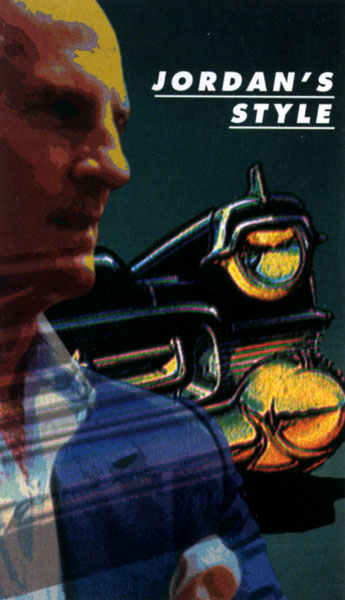 Corvettes by Design
Corvettes by Design
by Chuck Jordan
From “Jordan’s Style”
Sports Car International, June–July 1996
Much has been written about the history of the Corvette from an engineering stand point (“Zora for President!”). But there’s another part of Corvette history that’s equally important, and that’s Corvette design.
Let’s be clear: The Corvette was born in the GM Styling studios, and the Corvette’s father was Harley Earl; none other. This took place back in the early 1950s, at a time when everyone was all excited about the Jaguar XK120 and sports cars that raced through the streets of Watkins Glen.
It was also a time when General Motors staged yearly extravaganzas called Motoramas at New York’s posh Waldorf-Astoria Hotel and other venues across America. These were big shows that introduced the coming year’s production cars along with a number of GM showcars. The Motorama was Harley Earl’s brainchild, and GM Styling not only laid out the shows, it also designed and fabricated the dream cars that became the stars.
For the 1952 Motorama, a very special car was being designed in a secret studio on the third floor of an ancient Fisher Body plant a short distance from GM’s Detroit HQ. The studio had a NO ADMITTANCE sign on the door, and only Harley Earl and a few others were allowed inside.
I’d recently been hired by General Motors and happened to be working one floor above this secret studio. We all knew about it, but didn’t know what was going on inside, so we were very curious. After working late one night, I decided to just go down and see what the mystery was all about. I unlocked the door with my passkey, turned on the light—and absolutely couldn’t believe my eyes! In the center of the room stood a full-sized clay model of the neatest 2-seat sports car I’d ever seen. Those graceful surfaces, the wraparound windshield, the covered headlights and flush concealed top—it was sensational. It seemed to be doing 100 mph just standing still. I stood there stunned.
That first Corvette stole the show at the ’52 Motorama. It caught everyone totally by surprise, and the public reaction was so overwhelming that GM decided to produce the car. That’s basically how the Corvette came into being.
Harley Earl created the Corvette, yes, but it was William L. (Bill) Mitchell, the man who took over from Earl, who actually had more to do with the Corvette’s image, evolution, and excitement than anyone else (sorry, Zora!). Mitchell became obsessed with Corvettes. He always maintained a special studio to work on them, and this was Bill’s release—his break from the hard work of production design. He could exercise his passion for sports cars and his love of racing down there, and as a result, he spent a lot of time in “his” Corvette studio.
In 1962, I found myself promoted to director of GM design, meaning I was Mitchell’s assistant for exterior design. It was my job to follow Bill around, to help him out, and to sometimes do some of his dirty work for him. So I witnessed Bill’s most prolific period up close, and I want to say right now that it was Bill Mitchell who designed all the Corvettes done during his vice presidency, no doubt about it (sorry, Shinoda!). Sure, there were lots of designers making sketches and developing ideas that influenced Bill, but if any of them got too aggressive, Mitchell would just say, “Don’t flatter yourself, kid—I design the Corvettes around here.” And he did.
Mitchell’s passionate efforts produced some wonderful and significant show cars, many of which he drove on the street as his personal transportation—standouts like the Mako Shark and Manta Ray. But none was more important to Corvette history than his own competition car, the fabulous 1959 Sting Ray racer.
I remember the development of that car vividly. Bill told us exactly what he wanted—a smooth body with a break line all the way around and fender bumps over all four wheels—and he made sure he got exactly what he wanted. Mitchell liked this design so much that when it came time came to start work on the ’63 production Corvette, he simply said, “Make it like the Sting Ray.” And again, he got exactly what he wanted.
This came at what I consider the most exciting period in Corvette history, and I’ve always believed that this excitement showed up in the design. I remember thinking while the street version’s clay was being roughed out, “Wow—this is really a show car. How will it ever make production?”
The coupe became our focus. We developed the body, including Mitchell’s favorite boattail upper, as one total shape. The 1963 split-window Coupe is my all-time favorite, because it’s pure Corvette and pure Bill Mitchell. That car was a winner when it first came out, and it’s still a winner today.
The mid-engined period was another great era in Corvette design. We were all fascinated by mid-engined sports cars, Mitchell most of all. This was probably the first (and only) time he agreed with Zora. When GM had the Wankel rotary engine under development we seized the opportunity to design an advanced, mid-engined Corvette using that powerplant. The 4-Rotor Corvette, with its double-tapered profile, Vee windshield, and super-clean surfaces, was an absolutely new and bold Corvette design statement. Of course, it soon became apparent that the Wankel wouldn’t fly as a production item at GM, so the 4-Rotor was renamed “Aerovette” and fit with a 400-inch V8. Even then, though, a mid-engined design was deemed to expensive.
We always had an advanced Corvette design in the oven, so that whenever the bell rang for a new production model we’d have one ready to go. That was the situation in 1985, when we decided to take another crack at a mid-engined Corvette. In a secret studio way down at the far end of the Design Staff basement, we put together a small group of talented designers, sculptors, and technical people. Jerry Palmer headed this group, and the idea was to set up a free, uninhibited atmosphere where the staff could reach for the moon—nothing would be too wild.
But as sometimes happens when you set a group free, it’s hard to establish a new direction. For example, one day early in the process I walked into this studio, looked at the work, and all I could say was, “STOP!” The proportions just weren’t right, and the design was too conservative.
It was time to start over.
On the next try, the packaging people helped with the proportions and the designers got the message to reach—and reach they did! In the end, the clay sculptors brought this beautifully voluptuous shape into three dimensions, and the resulting creation had a profound effect on sports-car design that continues to this day. It’s been one of the most influential designs we ever created: the Corvette Indy.
The Indy and its derivative, the CERV-III, renewed the front-versus rear-engine discussion, but in the end the traditionalists and money guys won out again. The next Corvette would be front-engined, and with that decision made, it was time to get busy on an advanced front-engine/rear-drive car.
I wanted this to be done away from Detroit, so I asked our Advanced Concept Center (ACC) in California to design a front-engined Corvette targeting the ever-important West Coast market. The goal was to create a “California Corvette”—a design so influential that it would set the direction for the next generation. I was now GM’s vice president of design, and the production date for the next Corvette was fast approaching, as was my retirement.
After a lot of experimentation and a couple of false starts, ACC modeled a Corvette that was absolutely outstanding. We called it the Sting Ray III and built a running prototype. Now, I have to tell you that designing a car and getting it into production are two very different things. We shipped the Sting Ray III to Detroit and exposed it to everyone involved in making production decisions. But even though it created spontaneous enthusiasm and general agreement that this was the right direction for the next car, the program suffered a number of delays, key players got changed, and the corporate culture became a lot more conservative. Suddenly, passionate, emotional design just wasn’t part of the new vocabulary: Taking design risks became a no-no.
It’s no surprise, then, that the upcoming 1997 Corvette “ain’t no Sting Ray III.” That’s too bad. Without giving away any secrets, I’ll just say that if you like today’s design, you’ll like the ’97. It’s that simple.
I’ve been lucky to be one of the few people who’s lived with Corvette design from the beginning. I’ve experienced the emotional highs of exciting Corvette designs and the disappointment of those that for various reasons didn’t measure up. But through all of it, I can tell you it’s been a whole lot of fun. So long live the Corvette—whatever form it takes!
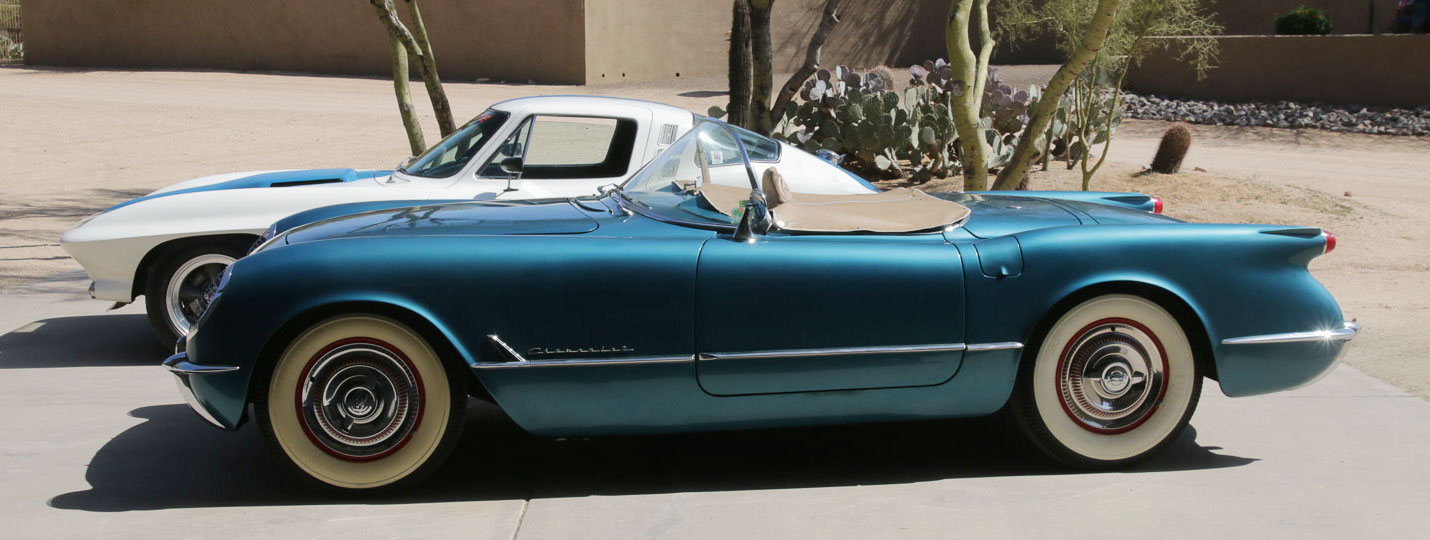
1954 Corvette, owned by George Prentice
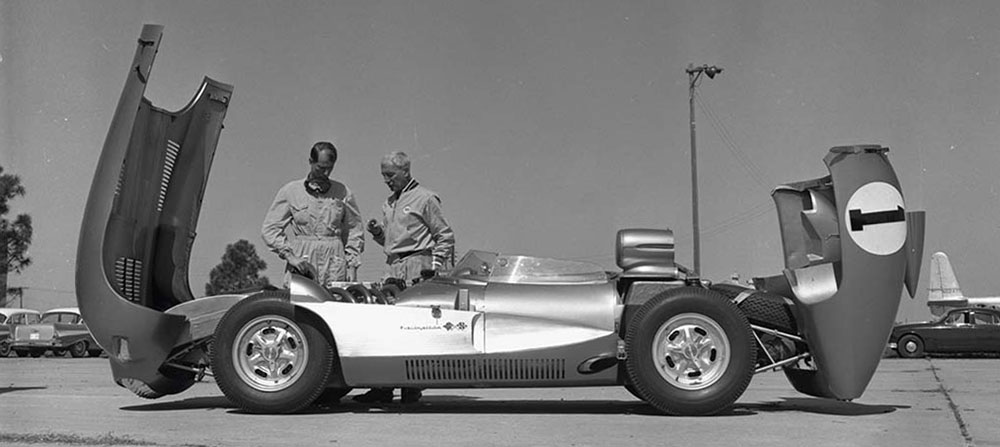
1957 Sebring Corvette SS
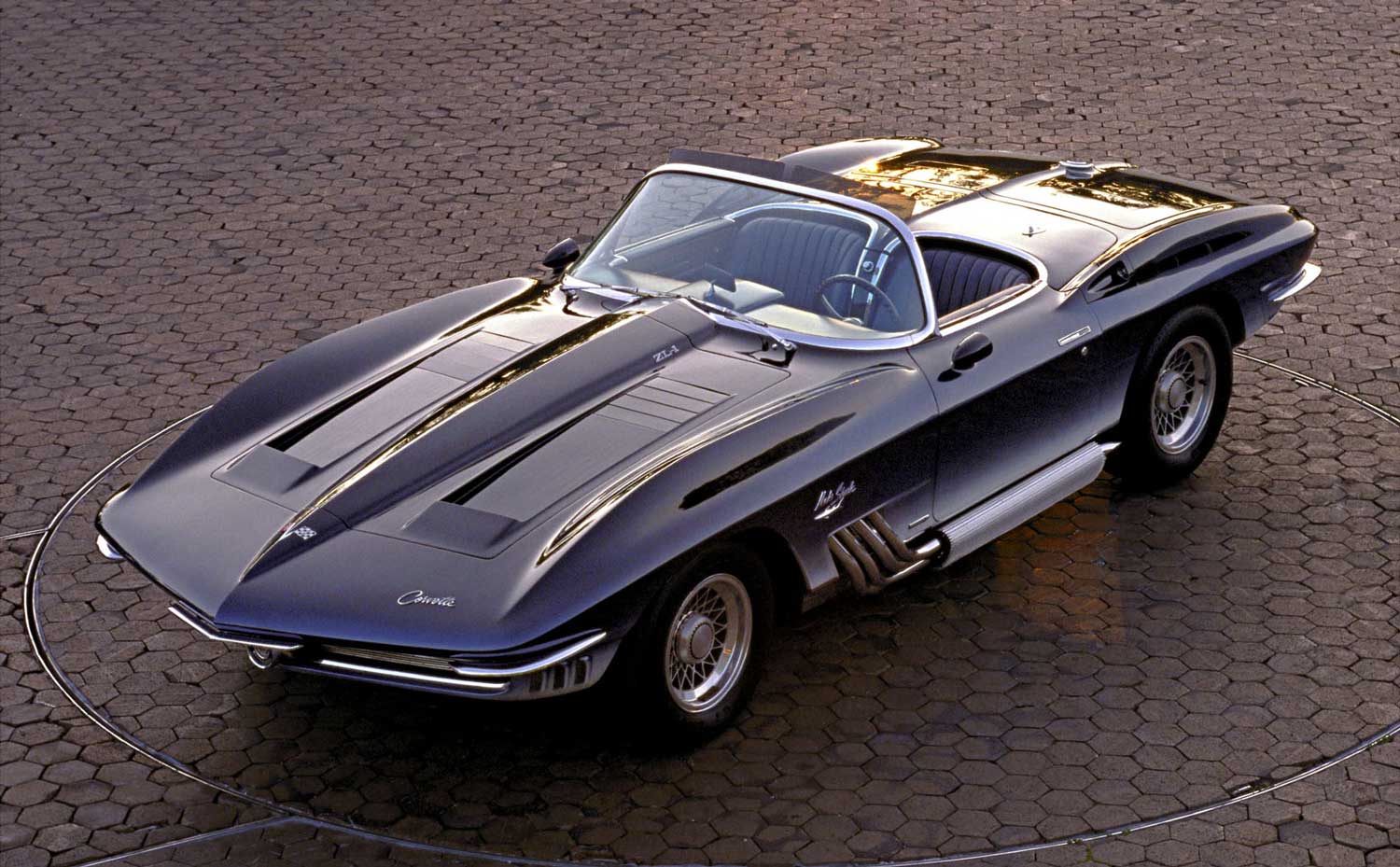
Corvette Mako Shark on one of three turntables on the Design Staff viewing patio.
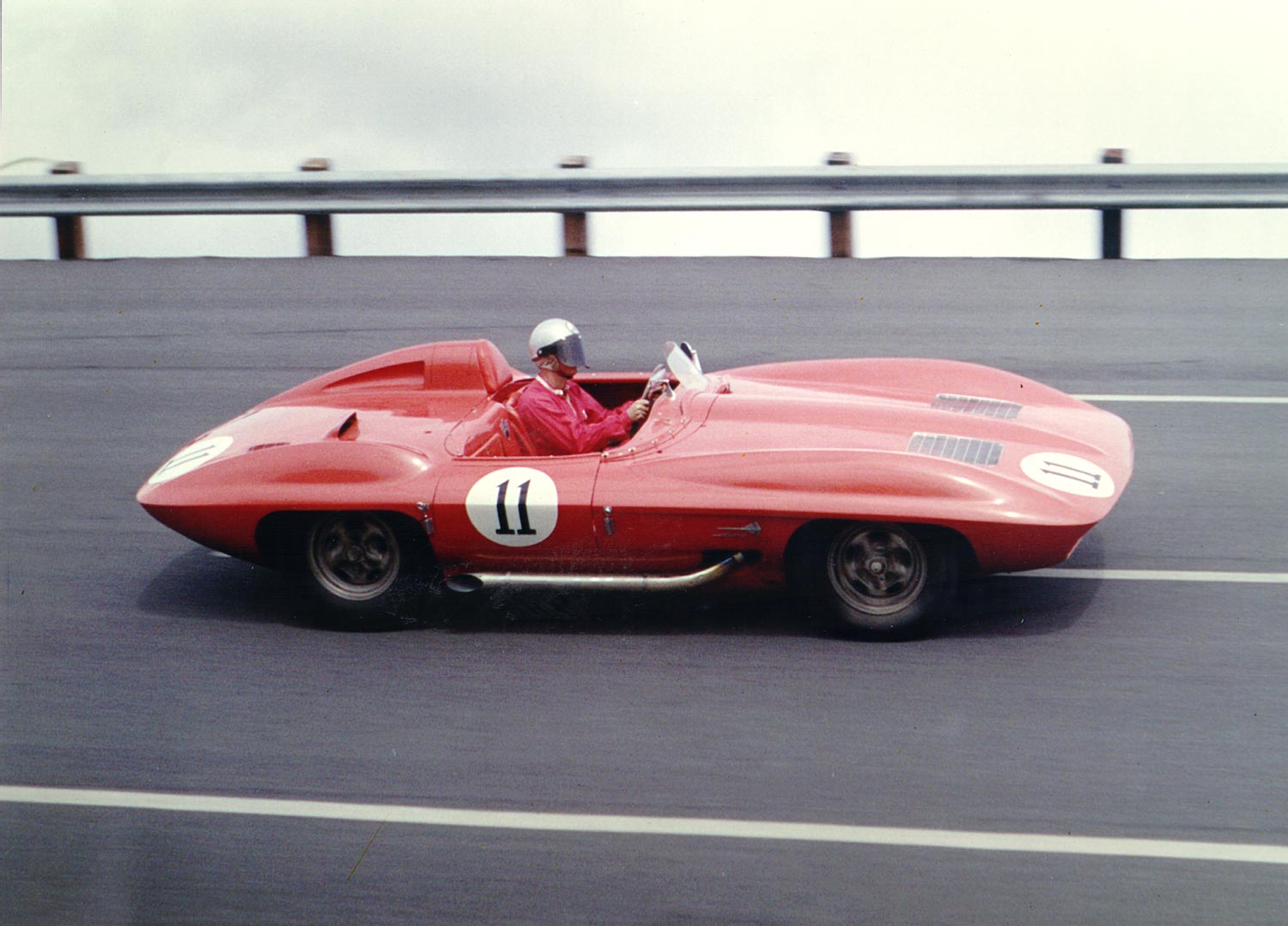
1959 Stingray Racer
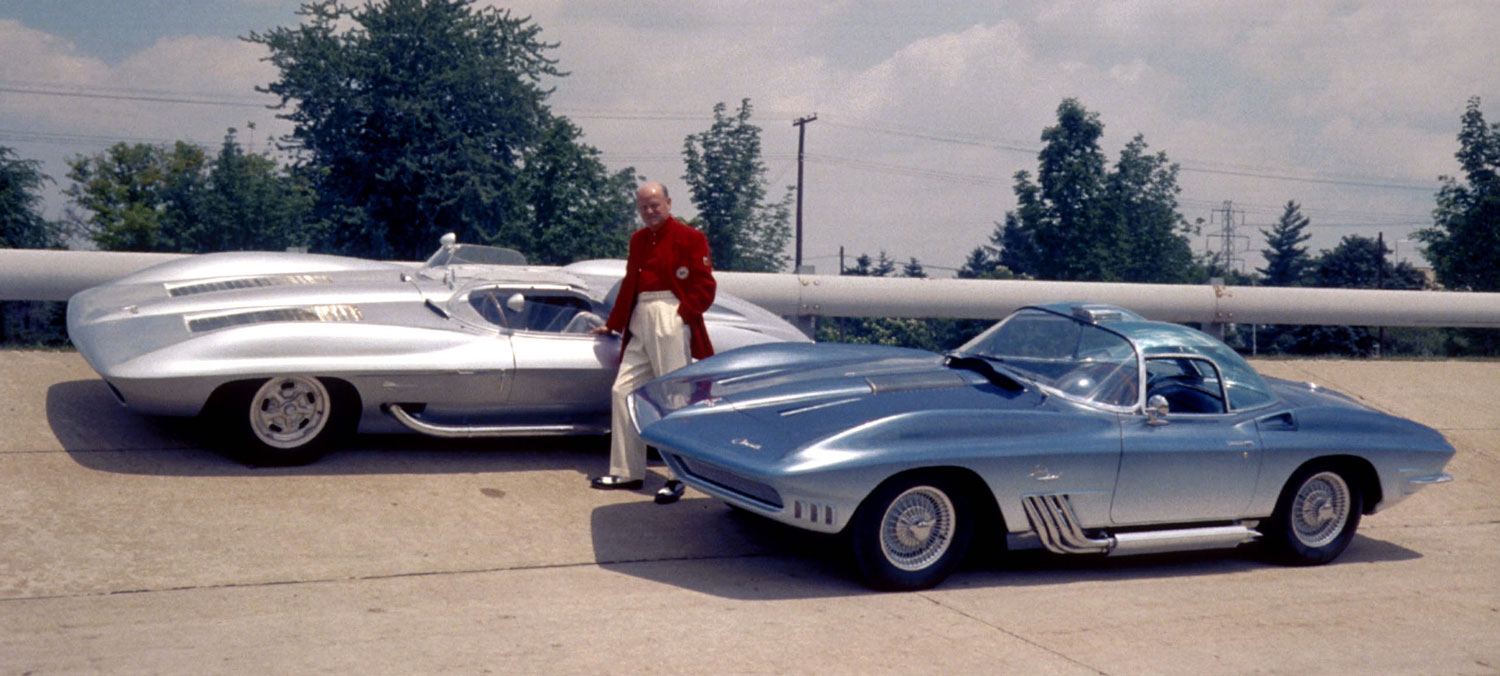
Bill Mitchell on the banking at the Tech Center test track with the Stingray and Mako Shark.
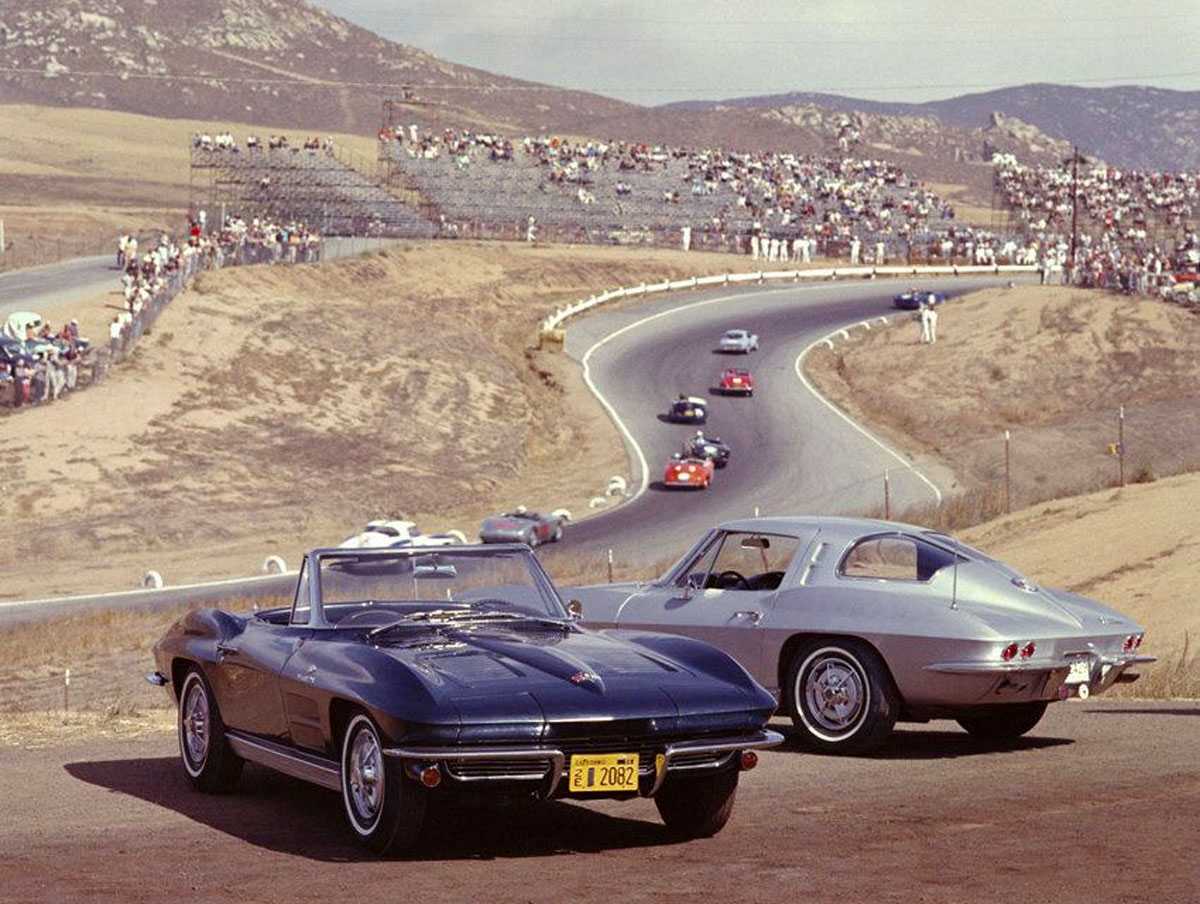
1963 Corvettes at Riverside International Raceway
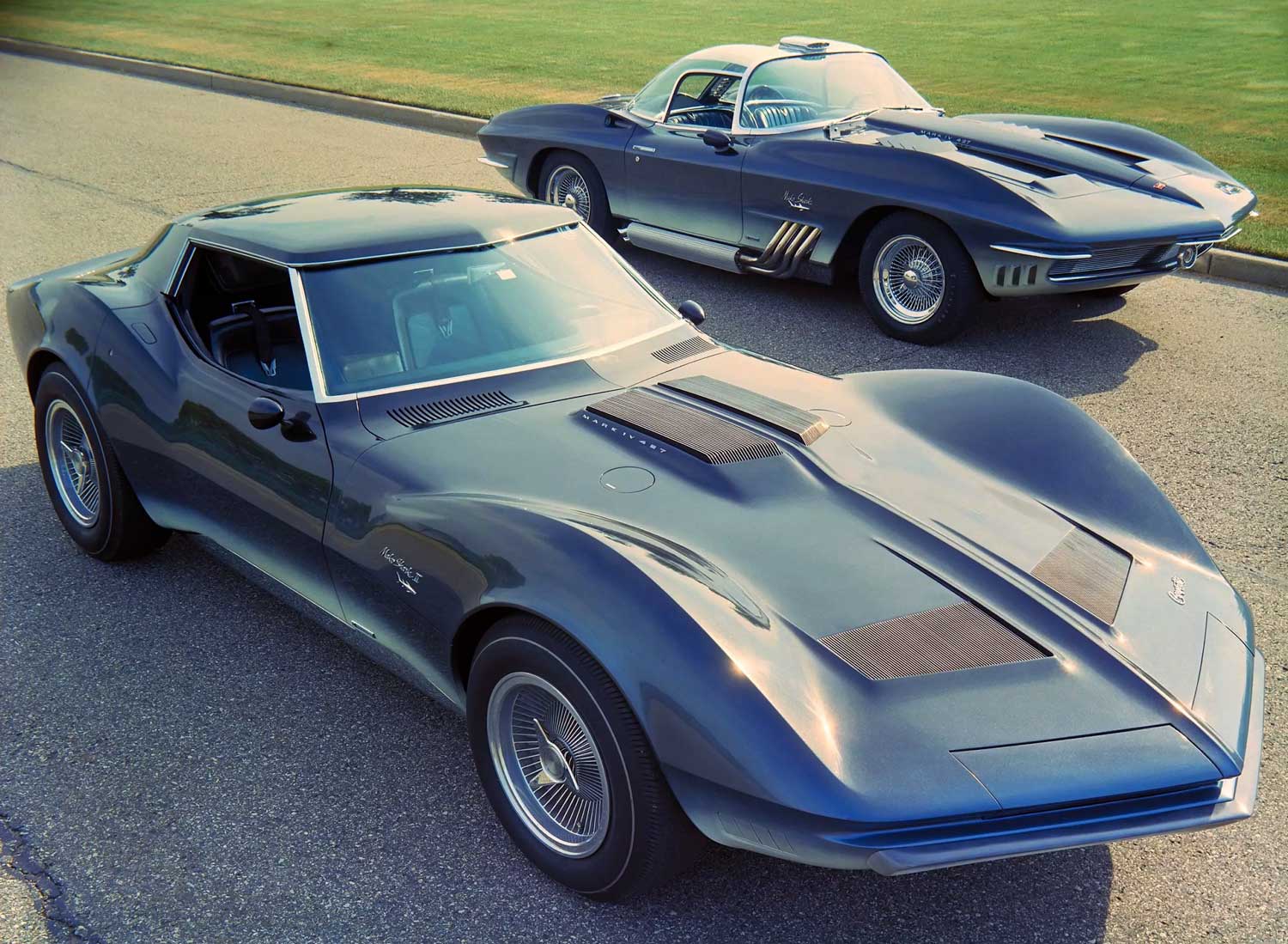
Corvette Mako Sharks I and II
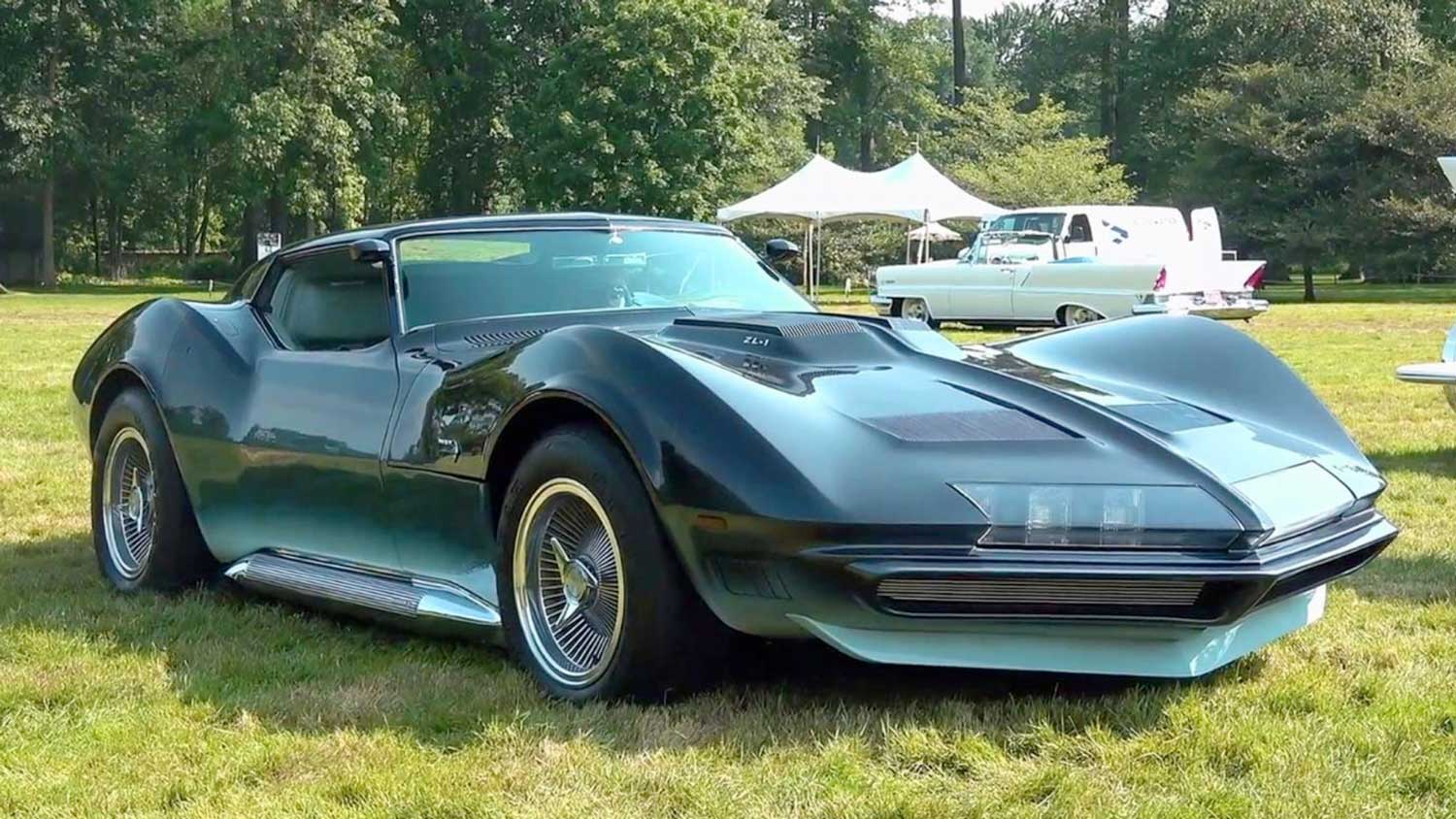
1969 Corvette Manta Ray
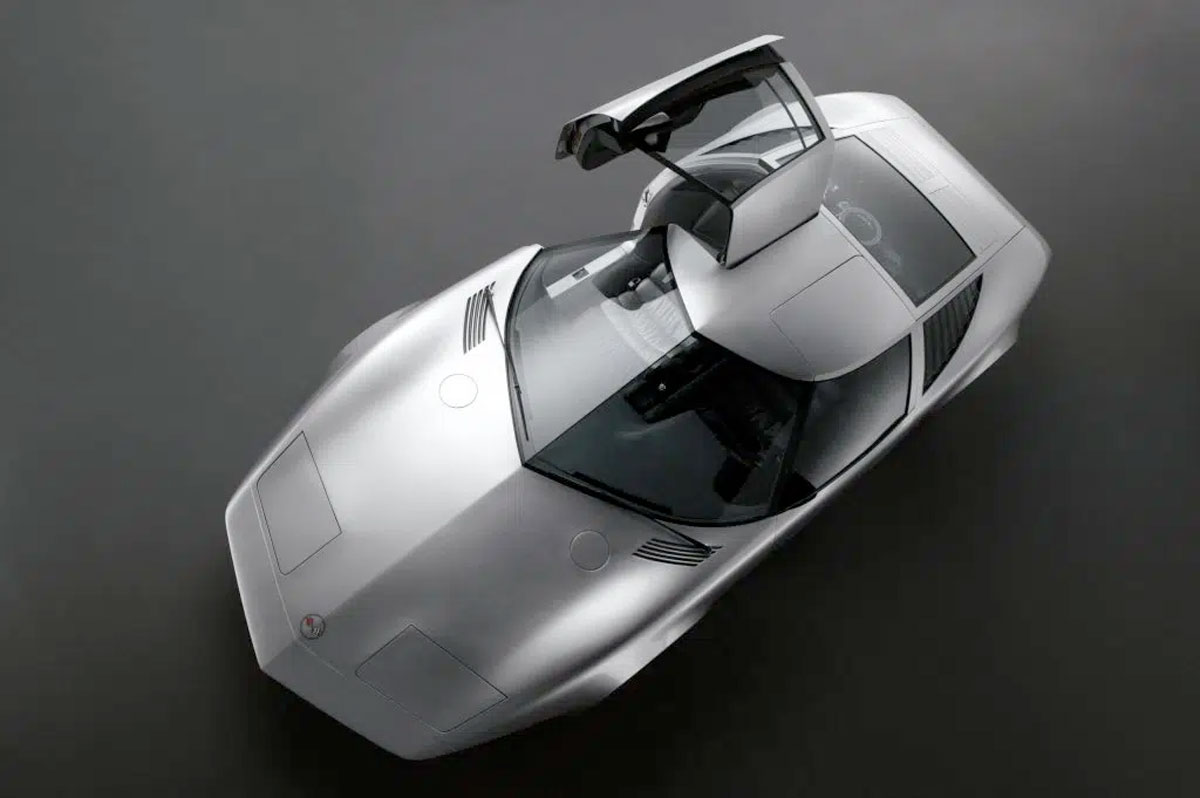
1976 Aerovette
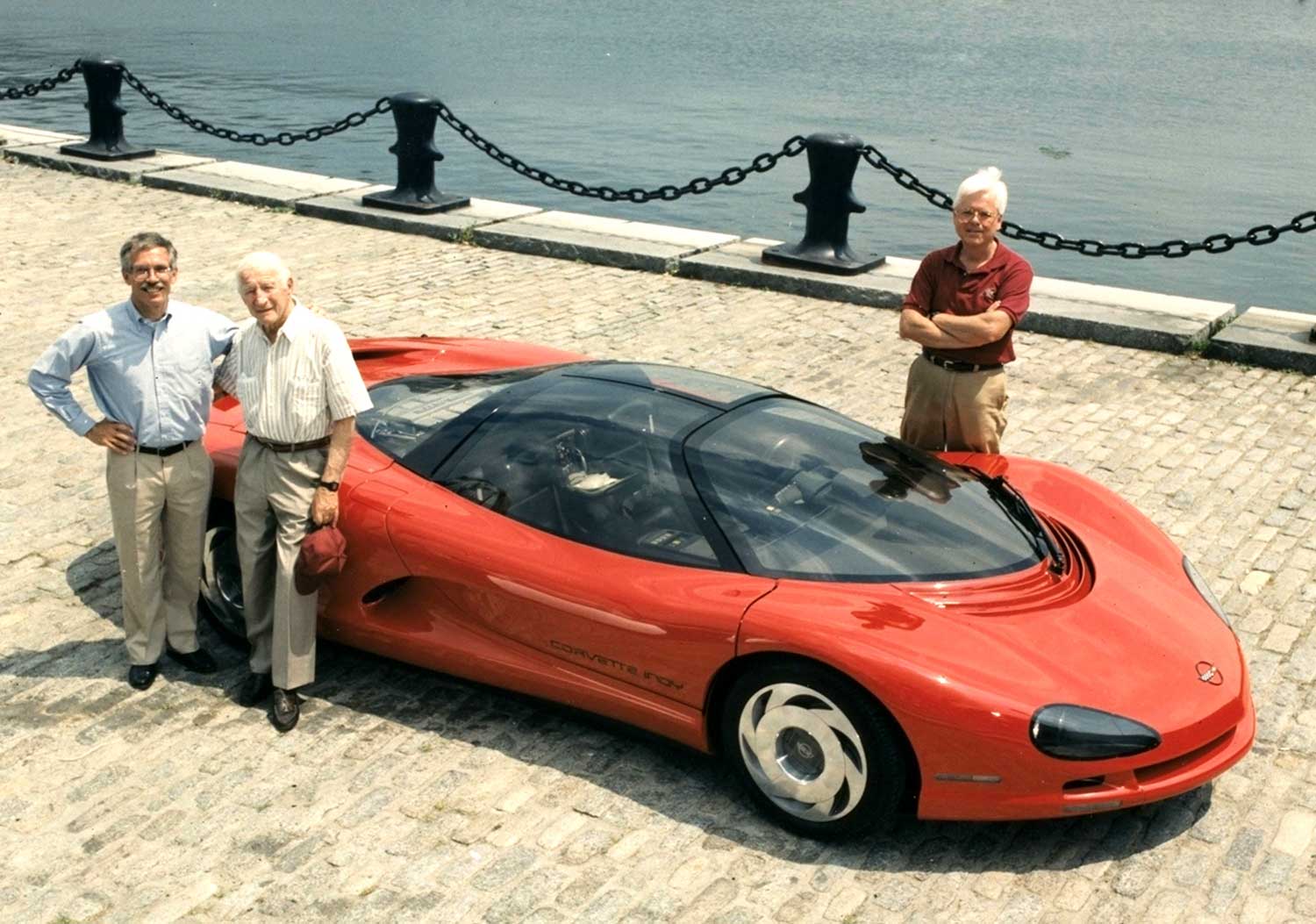
1986 Corvette Indy
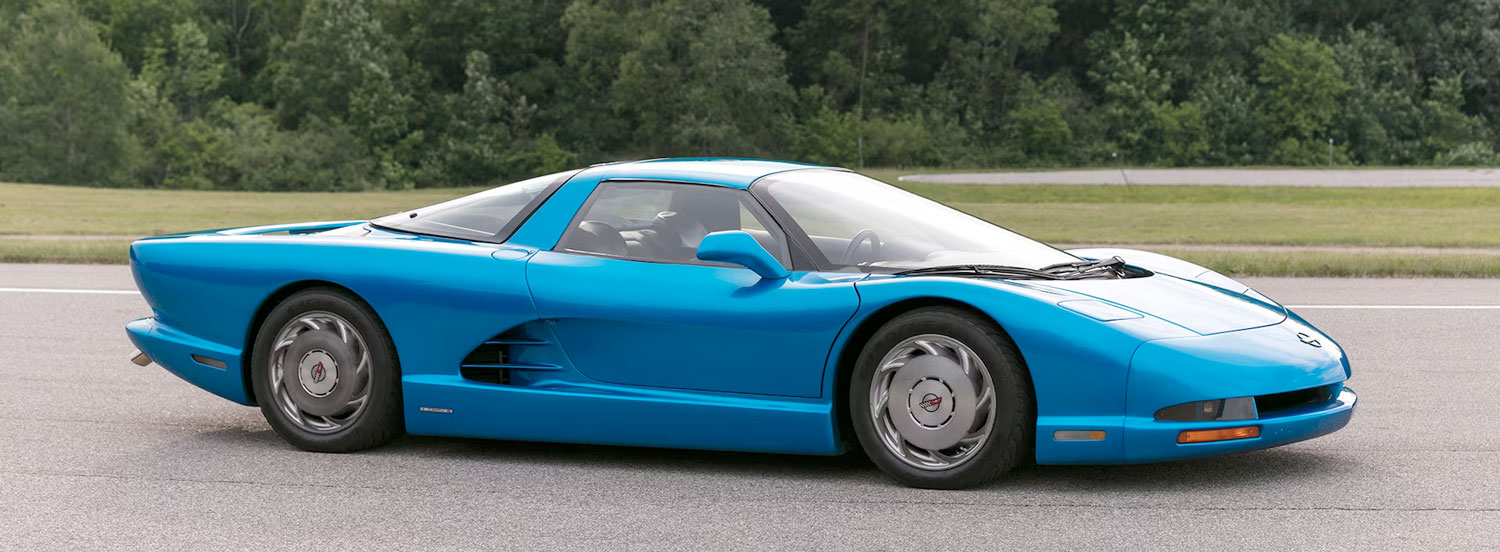
1990 Corvette CERV III
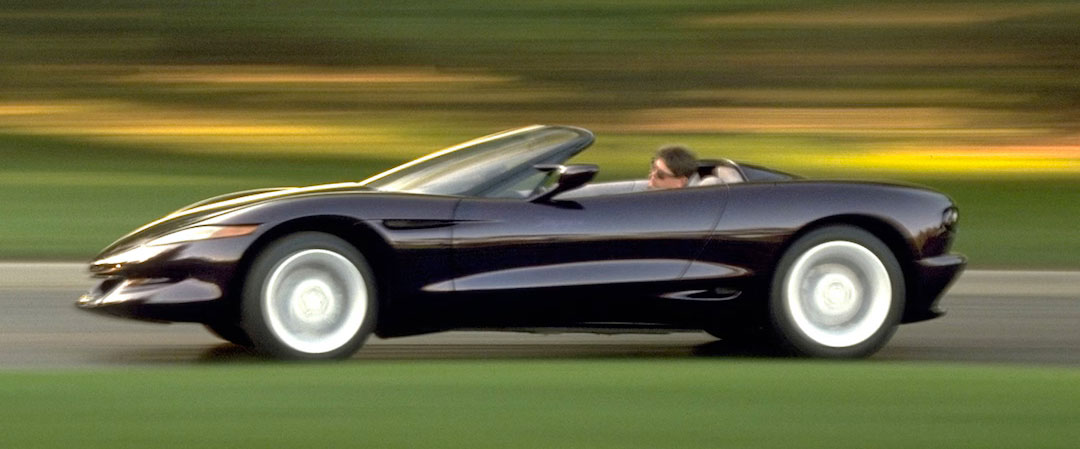
Stingray III
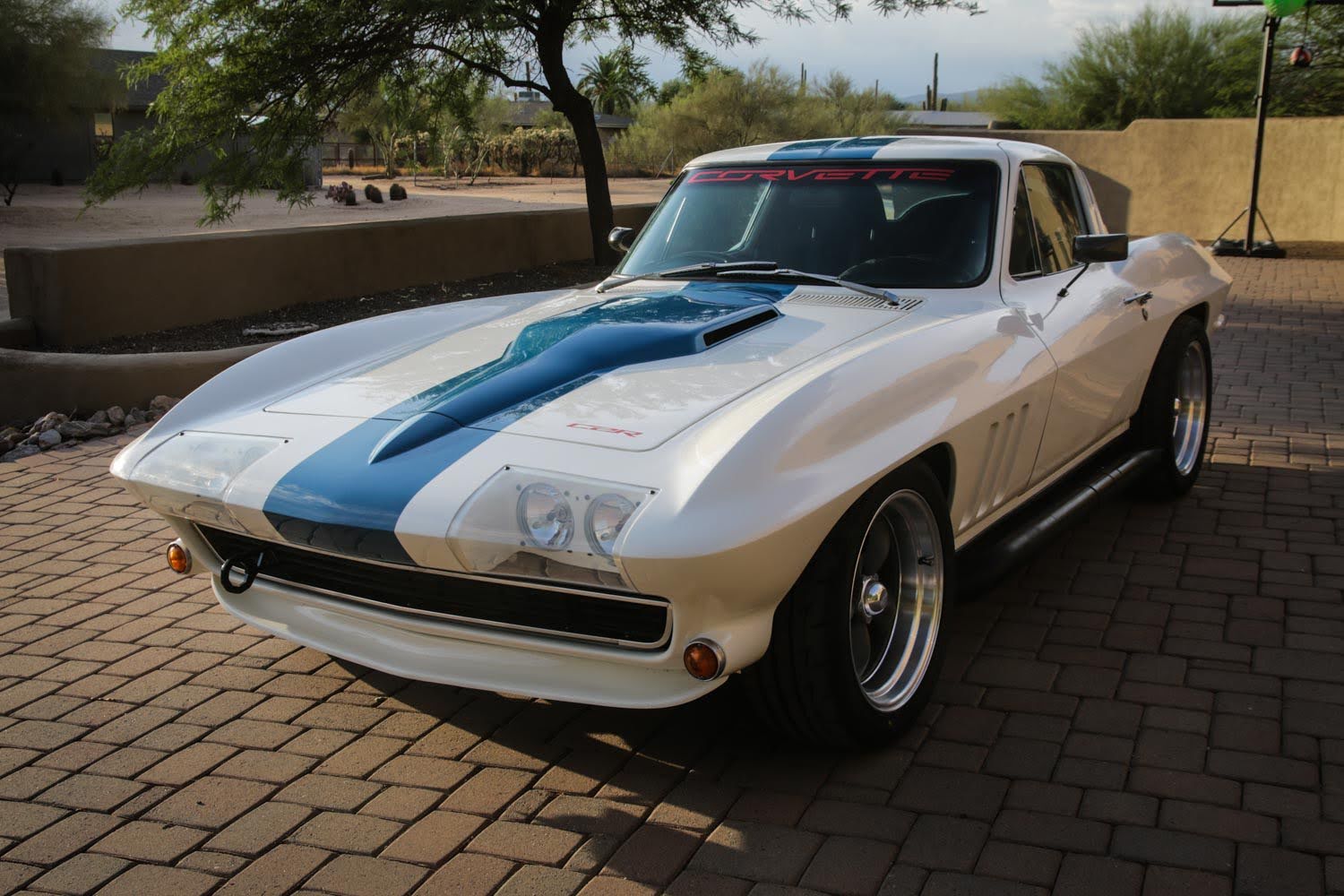
How did this ’65 get in here?

There was no 1952 Motorama event. The Corvette made it Debut at the 1953 Motorama
Chuck ends with a brief story of the Sting Ray III. I have seen the photo files on the creation of this car, which includes the description of the novel chassis created for it and the evolution of its design. It was a whole reinvention of the Corvette and as such a breakthrough car.
I can only imagine the frustration that Chuck felt when this splendid reimagining of the Corvette hit the corporate bumpers.
It was great to reconnect with Chuck Jordan through this priceless story written by him many years ago. His recollection of the creation and evolution of Corvette adds so much to the very storied history and understanding of Design’s contribution to this American treasure, Corvette.
In his writing, Chuck is both diplomatic and very direct in setting the record straight by giving all credit for Corvette’s creation to Mr Earl and giving Bill Mitchell total credit for so many Corvettes which followed.
I thank Chuck for writing this important story so many years ago, and thank Gary Smith for bringing Chuck’s story back to life.
Ed Welburn
This is a wonderful account of Chuck’s involvement with the design of the CORVETTE from day one. For GARY to put this on the site is very timely as although it may be hard to believe, Chuck Jordan is not in the CORVETTE Hall of Fame. Everyone else that you can imagine that was ever associated with the CORVETTE in an important way is there, much to their deserved credit. There is a story that Chuck did not seek lauditory recognition. I can see that as he did not need to, his achievements are well understood, especially by those in the design community. However, he did have a profound effect on the design of the CORVETTE in many different ways for many years and for that I think he should be recognized.
My reasoning is that people who love CORVETTES and CORVETTE history deserve to know where the major contributions for the design of the CORVETTE came from, who he was and what his contributions were.. I am absolutely sure that deep in his Corvette heart Chuck Jordan will NOT be offended by this recognition.
Mark Jordan, Chuck’s son, is submitting an application to have Chuck included in the CORVETTE HALL OF FAME at the end of this July. If you support that effort then send an email to Mark through Dean’s Garage.
He is currently gathering information for the support of that effort. It does not need to be long—a very short note supporting his effort.
Thank you so much Gary for putting this account on your site at this time.
Dick Ruzzin
Chuck was not only a very kind gentleman and of course brilliant designer, but also a serious car enthusiast… I enjoyed our friendship that started over models and our mutual enjoyment of sports cars.
So, if it was so important to the company, why didn’t Jordan drive a Corvette himself ?
It is bewildering to me that Chuck Jordan is not in the Corvette hall of fame . I was working in the basement of GM design on the corvette Greenwood in 1992 or 1993 with Roger Hughet the lead designer and the lead sculptor was Greg Stelmack . I don’t remember if Chuck was retired or getting ready to retire . I do remember his love and excitement and encouragement he gave us. He was a great inspiration to us and a super designer. It is saddening that because someone is on a vendetta that
He is excluded ! This is a wrong that should be corrected. I was a lead sculptor for over 20 years and worked at Design Staff for 33 years. Sincerely Gary J. Staniec
Those awe-inspiring GM Motoramas will dominate history as “The Real GM” – before the advent of Corvairs, Vegas, Sevilles, Ant-Eater Vans, mid-engine Pontiacs, SSRs and other marketing tragedies marred their Magic-Mirror complexion.
It may have been too late in the day for GM to reverse obsolete styling trends on production cars, what with Ford’s George Walker Dream Team fast at work, but The General more than made up for it with show and production cars that bettered the best of the century.
With all due respect to “Robert”, the General Motors Motoramas began with 1949 and concluded with 1961. My friend Paul and I were fortunate enough to attend the final Motorama at the Cow Palace in San Francisco. It was a highlight of my automotive career. The entrance was graced with a metal-flake coral 1961 Buick Electra “Flamingo” convertible with a solid white interior.
The “bumps over the wheels” on Mitchell’s 1959 Sting Ray were likely inspired by the Ford Muroc, a styling model making the rounds at Ford’s design center from 1950-1954. (The Muroc was named for an ancient dry lake bed in California.) My fascination with those “bumps over the wheels” led to a lifelong personal relationship with the Ford family.
Thanks, too, for the rarely-seen color photos of hallmark Corvettes.
tom,
An interesting question.
Since Chuck Jordan was responsible for the designs of so many cars at General Motors throughout the years, he had the opportunity to drive anything. He could drive any of Bill Mitchell’s Corvettes, as well as specially prepared Corvettes from Chevrolet, R&D, which he did. So he did drive many Corvettes, the 1958 Corvette facelift was under Chuck’s personal direction and he owned one. There are pictures of him with his children driving his personal car.
With the opportunity to drive that many cars, why didn’t he drive a Corvette every day? Think of the times and his different design positions of influence, the lineup of special cars of all kinds that were being produced by General Motors and modified by Bill Mitchell was a mile long.
I have been driving a Corvette for over 24 years, before I retired as Director of Design for CHEVROLET. It’s perfect for me, I even drive it through the winter, which I just did. Would I drive one every day if I were Chuck during those times? Probably not. The Executive Garage was a candy store. Bill Mitchell created every kind of special car that you could imagine. They were all available to be driven. They’re just wouldn’t be room or time to drive a Corvette on a daily basis.
Bill Mitchell has made it very clear that the inspiration for the Stingray was the Disco Volante. I doubt if anyone ever looked in Ford’s direction for inspiration. Just a look at what has been done at Ford through the years makes that clear.
This is about the CORVETTE that stands today as an outstanding example of modern automotive engineering and design. I don’t know the aero story, or the race car story for the current car but I’m sure it would be very revealing. In the meantime, Corvettes, with the small block engine inspiration that exist even today have given more pleasure to more people than all the Mercedes, BMWs, Audi, Ferrari, Alfa, Romeo, Maserati engines all put together. With great accomplishment comes risk, and there certainly have been some failures.
In the overall maturing of the automobile as we have seen over the last hundred years, General Motors still provides some of the best products on earth. In my opinion, they may not take enough risk, but that is their choice.
Alfa Romeo Disco Volante Coupe
Was told that the Manta Ray was actually the same car as the Mako Shark II. Is this correct? Also, what happened to the XP700?
The Mako Shark II was restyled as the Manta Ray. I found this article (LINK) that suggests the XP-700 was the basis for the XP-755 (Mako Shark I). —Gary
UPDATE. This photo (from Mark Jordan) proves that both the XP-700 and XP-755 both existed at the same time! (see later comment in this thread.)—Gary
It’s a great story of the evolution of the Corvette.
My 35 year career started in ’67 as a junior clay modeler. Later a Design Sculptor, a Chief Sculptor, a Quality Network Rep for management, a Cadillac Studio Manager, Chevrolet Studio Manager, a Project Manager. I even helped run the Summer Intern program for a while. I loved it all but the magic was in the studio. I was there because of the magic. The mix of all those talented people. I remember the Corvette studio with Jerry Palmer, Al Thol, Greg Stelmack and so many others. Just to see Bill Mitchell reviewing our work-there was a delightful but palpable fear in the atmosphere. The adventure of Pontiac Studio with Jerry Hirshburg and Wayne Viera.
Chuck Jordan was our leader-inspiring in his appearance and in his intensity to describe the vision he needed to see in the clay. I also enjoyed working for Jerry and Phil Garcia in the Advanced Studios as a chief Sculptor with a crew of sculptors. We delivered three beautiful Buick show cars in each of the three years before Phil retired.
And when our energy was ready to burst, we all played crazy tricks on each other-Invented competitive games, and once built a shark fin for the Design pool as shown in Time magazine.
I still miss the people, the clay and the beautiful magic of Design Center. RZ
The mid ship Corvette designs under Bill Mitchell were superb examples of clean, timeless design. The mid ship Corvette that did go into production……….well I’m sure it functions dynamically among the best. DFO
The C8’s form betrays its function.—Gary
I would also add Hank Haga to the list of designers missing
from the CORVETTE HALL OF FAME.
He was chief of the studio that did the 1968 CORVETTE.
Bob Ackerman
Hank Haga is in the Corvette hall of Fame.—Gary
https://www.corvettemuseum.org/henry-haga/
As I age, I have come to see the C1 1956-1957 Corvettes as the classics, the 1963-1967 C2 Corvettes as the breakthrough models and the 1986-1990 Corvettes as the best of the C4s, in my opinion. My favorite of the 21st Century Corvettes are the C6 models. The C7s were a stop-gap model in my opinion until the C-8 was available. The C-8 is an opportunity lost to me, as I think the bodywork is too vulnerable to the slings and arrows of everyday driving. I admire the Chevrolet engineers for proving they could manufacture a production-line vehicle in quantity at Bowling Green. Today I view the C8 Corvette as America’s Ferrari. But all Corvettes should have ROUND taillights !
I’m not a designer but know when I see great design. I agree all Corvettes should have round taillights. When driving behind Corvette sans round taillights I always wonder how they could do it now. Do you have any suggestions?
Dave
UPDATE. This photo (from Mark Jordan) proves that both the XP-700 and XP-755 both existed at the same time!—Gary
Dave, round taillights were a traditional Ford hallmark for years more than anything else. Taillights used by Chevrolet post-1965 would have blended more functionally with the radical styling of post-1983 Corvettes than round ones that resembled simple, after-market travel trailer reflectors.
The updated photo of the XP-700 and XP-755 was from 1962.
The first Corvette with a round tail light was the 1953 model, the C1 and the C2 had a round tail light. The Corvette SS had three round tail lights on each side. They did not come from Ford. The round tail light is a very basic lapb for the rear of a car, it goes way back to the time when cars didn’t even have tail lights, they were options availablein the aftermarket, like headlamps.
Regarding round tail lights on the new cars, those manufactured say since 2000, the C-5 C6, C7 and C8, I owned all of them, the C6 for as long as nine years.
I don’t miss round tail at all. I like the lights on my C8. I look forward to driving that car every single day first of all because of the way it looks. Second because of the way it drives. I’ve had it now for over three years and I’m well into the fourth year. Since I have had the car, the number of times people have stopped me, talk to me about the car, I cannot count.
The real unknown story about the design of the C8 Corvette is the aerodynamic story and how it was designed to be a race car. You’ll notice that the race cars look exactly like the street cars. That did not happen by accident. That’s the story that I hope we will be able to read someday.
It’s interesting that Bill Mitchell’s Corvette Sting Ray, and the production 1963 Sting Ray, were designed at a time when understanding of vehicle aerodynamics and the importance of downforce in maximizing contact with the pavement at speed was still in its infancy. Use of wind tunnels was limited and body and chassis design followed what “looked” aerodynamic for the most part. Early Sting Rays reportedly became very light in the front end at high speeds. Also notable is that some very early CanAm racers had a history of becoming inconveniently airborn, although with remarkably little loss of life, given the total destruction of the machine that inevitably followed. It was around the time of the mid-Sixties that serious advancements in the understanding of the value of front air dams and rear spoilers increased, largely due to the efforts of Chevrolet’s Research and Development Department at the GM Tech Center, at a time when GM was deeply involved in supporting team racing efforts in NASCAR, CanAm and TransAm (see: “Chevrolet – Racing? Fourteen Years of Raucous Silence, 1957-1970” by Paul Van Valkenburgh) . Very soon, effective downforce improvements, including rear wings (notably Formula 1 racing and CanAm) appeared on performance machines as well as on manufacturers’ production vehicles, with dramatic effect. Much credit goes to GM for their discoveries made during these formative years of aerodynamic advancements combating lift that keep vehicles glued to the road at high speeds.
I just ran across this article earlier today. I met Chuck Jordan, probably sometime in the early ’90s but cannot recall the specific time period.
I was a model car dealer at the time, and was set up with a table at a small toy show in Michigan. I noticed that a very well dressed, and distinguished looking gentleman was set up behind me, with a table full or miniature Ferrari models. I got to talking with him through the day, and happened to ask him where he worked?
He simply replied,”Oh, I work for General Motors.” John DeLorean had recently released his book On A Clear Day You Can See General Motors. To make conversation, I asked if he had happened to read the book. His answer was “Oh, I’m in it! John and I worked together at Pontiac.”
Proceeded to ask him what his job was at GM, and he answered that he was the head of design! Turns out it was Chuck Jordan, a very simple and unassuming man, who was selling his miniature models, just like me!
I would run into Chuck at the various toy shows over the years, and he would always make it a point to stop by and talk. Always knew when he was there, as a customer would stop by and say “hey, there’s a Ferrari in the parking lot!” I have always valued knowing Chuck.